This post may contain affiliate links. As an Amazon Associate we earn from qualifying purchases.
Old gardening myths. They’re back and they are everywhere.
It’s amazing how many Americans have turned to gardening during the COVID-19 pandemic. Facebook gardening groups are full of brand new gardeners seeking advice or bragging about their successes.
That is, until summer hit. All of a sudden, those YouTube-educated gardeners are begging for help to bring their once Instagram-worthy plants back to life.
I expect many will drop out of the gardening world if and when life gets back to normal or when the “gardening is easy” of spring hits the “gardening can be challenging in summer” reality.
In the meantime, the Facebook gardening groups that used to be full of serious, successful gardeners are now populated primarily by young newbies doling out advice as if they were masters.
Drives me nuts. Truly nuts.
So, let’s take a look at some of this advice and bust the myths that we had hoped were long gone before gardening became a current fad.
Put a banana (or a peel) in the rose’s planting hole
I read this one this morning and let out a huge and very long sigh. Posted by someone who chose a triple-digit heat wave in which to plant three very young rose bushes, she claimed that her other roses thrived when planted with a banana in the hole.
Why a banana? This particular sage didn’t say, but the old myth is that it supplies potassium to the growing rose.
The truth is, many garden scraps will supply potassium, if composted. An avocado, in fact, has more potassium than a banana. So do dried apricots, prunes and orange juice. Why don’t people recommend that instead of a banana?
OK, enough rhetorical questions. Here is the truth of placing a banana in a rose’s planting hole:
- As the banana decays, it will create a pocket of air space around the plant’s roots. Air dries roots. Not only that, it may make the rose sink deeper into the soil.
- It takes a banana peel about 3 years to decay. That’s three years before the potassium becomes bioavailable. Naturally, this time frame depends on a few factors, one of which is the air temperature.
- Potassium is naturally occurring in soil. Do a soil test to determine if anything is lacking – don’t just assume.
- Too much potassium in the soil causes poor root growth. Rather defeats the whole banana-in-the-hole advice, right? It also causes chlorosis.
- If potassium is lacking in the soil, use a commercial fertilizer higher in the last number of the NPK analysis. We like the OMRI-certified Down to Earth Organic Fertilizer Mix (0-0-22) See the Resources section below for where to buy.
Don’t water the leaves on your plants in the daytime because the sun will burn them
“Don’t water your plants during the day because water droplets act as magnifying glasses and it will burn the leaves.”
Next time it rains on a sunny, day run outside and watch your plant’s leaves not burn
If you’ve ever been to the tropics you know that it frequently rains while the sun is beating down. Happens in some parts of Hawaii on a daily basis.
Yet the lush plant life remains unfazed. No burns on the foliage whatsoever. Why does this myth persist?
Who knows?
But here are the facts about water droplets on foliage on a sunny day. A team of British physicists, citing a lack of scientific evidence for the phenomenon, used computer modeling as well as tests on live plants to study it.
They “… disproved the theory,” according to Ricard Gray, science correspondent at The Telegraph.
There was no evidence that water droplets magnified the sun and burns leaves. They did find, however, that it is slightly possible for hairy leaves to experience burn. But. . .
“… hairy leaves tend to shed water, so water droplets would be unlikely to stay on them long enough to do damage.”
There is one good reason to not water plants during the hottest, sunniest part of the day and that is because much of the water will evaporate, thereby not available to the plant.
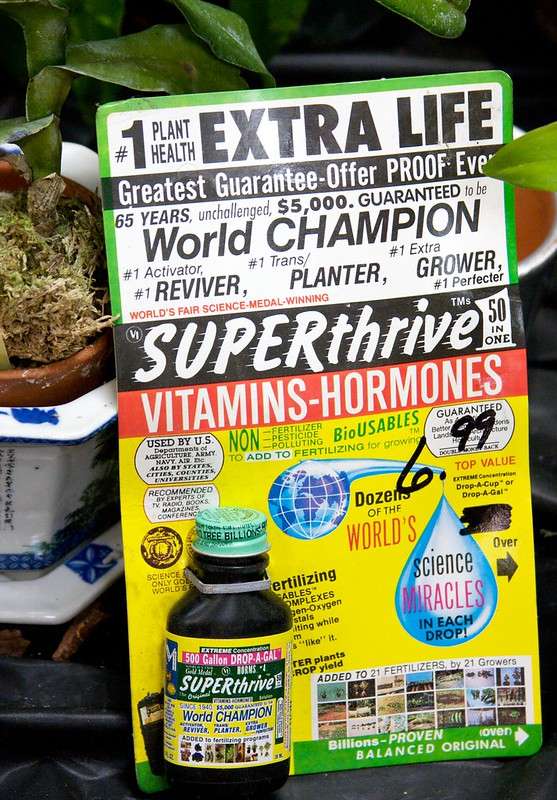
SUPERthrive is the best invention since the wheel
Use it on plumerias! Says a popular plumeria-grower Facebook page.
Superthrive, around since the 1940s, is touted as a miracle cure for everything from transplant stress to rooting cuttings. Yet, there are no scientific studies proving any of the claims to be true.
In fact, there are a few studies showing just the opposite. For this, we turn to Dr. Linda Chalker- Scott, our favorite gardening myth buster.
One study she addresses involved “rooting stem cuttings of Intsia bijuga, an Indo-Pacific tree in the pea family,” says Chalker-Scott. Turns out that “… traditional rooting hormones (IBA and NAA) were more effective than SUPERthrive.”
Another mention is that SUPERthrive is a dud at helping narcissus bulbs root.
SUPERthrive contains, according to Chalker-Scott’s perusal of the label, “… Vitamin B-1 (which plants make themselves …) and NAA, an artificial auxin used as a rooting hormone. The rest are mysteriously referred to as ‘crystalline compounds of C, H, O.'”
The myth of vitamin B-1 for plants is one that just won’t go away, despite it being smashed “repeatedly … in the scientific literature.”
Dr. Chalker-Scott warns gardeners that NAA, one of the ingredients in SUPERthrive, is “… an artificial rooting hormone classified by the EPA as a pesticide, making SUPERthrive an unregistered pesticide. Some states [and countries] ban the sale of this product,” Oregon and Wisconsin among them.
I might add that there is a federal ban on the product for cannabis crops.
Add compost, fertilizer, gramma. . .whatever. . .to the soil before planting a tree
In the old days, we were told to add all kinds of stuff to the soil before planting a tree. More recent research, however, cautions against the practice. In fact, everything we know about planting trees – from digging the hole to amending the soil (even if the soil totally sucks) – is wrong.
For instance, instead of digging a hole the same depth at which the tree has been growing, or the planting pot, we now know that the hole should be wide, but shallow.
Dig “… a broad, shallow hole, gently spreading out the roots, and planting the tree high, with the highest roots right at the top of the soil,” suggest the pros at Oregon State University’s Extension Service.
Then, “Back-fill with unamended soil — no compost, no fertilizer, no manure, no amendments or additives of any kind.”
Learn the science behind the advice at OregonLive.com.
Organic pesticides, herbicides and fertilizers are safer for plants and for gardeners
Hey, vinegar is organic, right? From what I read in the Facebook gardening groups and see on Pinterest, vinegar is the perfect organic solution for pests, diseases, weeds and, yes, even when used in fertilizer.
What these advocates don’t seem to understand is that, yes, the studies on vinegar as an herbicide find that at 20% acetic acid, vinegar does a fine job killing weeds (which are just plants that we consider undesirable).
The vinegar in your kitchen contains 5% acetic acid so what it ends up doing is fooling you. It kills the foliage but has no effect on the roots. So you see weeds that appear dead. But they aren’t.
Yes, you can purchase horticultural vinegar, but do you really want to use it? What you consider an “organic” substance, the EPA claims is highly toxic. More toxic, in fact, than glyphosate (RoundUp, for instance).
Then, there are pyrethrins, which many gardeners swear by. The problem with this “natural” pesticide is that, despite being considered organic, it also kills beneficial insects. The same holds true for diatomaceous earth and others.
Do yourself a favor and rethink what you consider organic and the safety of the product.
Plants require plant-specific fertilizers
Rose fertilizer, shrub and tree fertilizer, citrus fertilizer – the gardening centers are making bank on avid gardeners buying a different NPK formulation for each plant in the landscape.
Then there are the novice gardeners who think that throwing fertilizer on a sick plant is the cure.
Let’s look at the facts.
There is no “plant food,” nor do we “feed” our plants. They get everything they need from the air and the soil.
Sometimes the soil is lacking in the nutrients that plants require. You won’t know this, however, without a soil test. After all, it’s senseless to add nitrogen if the soil contains plenty of it.
That said, no, your lemon tree doesn’t need “citrus fertilizer” nor do your palms need one labeled for palm trees.
These fertilizers are all marketing gimmicks to get you to part with your gardening money.
Here’s an example. You’re shopping for “rose fertilizer,” because someone in a Facebook gardening group says that’s what you should use. According to the American Rose Society, the best NPK for roses is 6-12-16. NPK, by the way, stands for nitrogen, phosphorous and potassium.
Nitrogen is good for foliage growth. Most lawn fertilizers are either very high in nitrogen or contain only nitrogen. Phosphorous is essential for root development and to help nudge along the production of flowers and fruit.
We like to think of potassium as sort of the scientist of the group. It does stuff like move “… water, nutrients and carbohydrates in plant tissue,” according to Daniel E. Kaiser, and Carl J. Rosen, University of Minnesota Extension nutrient management specialists.
But there is more, according to these specialists. Potassium is “… involved with enzyme activation within the plant, which affects protein, starch and adenosine triphosphate (ATP) production. The production of ATP can regulate the rate of photosynthesis.” They go on to list a bunch of other things this wonder nutrient does for our plants.
Now, back to the lady shopping for rose fertilizer. She didn’t read the American Rose Society’s recommendation, by the way. Here is what she is faced with at the nursery:
“How can all these experts sell the best rose fertilizer when they are all different formulations?” asks Robert Pavlis, owner and designer of Aspen Grove Gardens, a botanical garden in Ontario, Canada (in which he uses zero fertilizer, compost or manure). He is also the owner of a garden myth-busting website that we highly recommend.
The middle number, remember, represents the nutrient that helps a plant to bloom, while the first one is responsible for foliage. Why does all but one rose fertilizer manufacturer think we want to promote foliage growth over bloom with a rose bush? And, as Pavlis says, if someone has nailed the perfect NPK for roses, why don’t all their formulas match?
Save your money my dear gardening buddy and purchase a fertilizer for your roses based on the results of a soil test. Remember, the American Rose Society claims that a 6-12-16 NPK is best for roses.
“If a soil test says your nitrogen level is good but your phosphorus and potassium can use more, there is 5-10-10 or 10-20-20, which means nitrogen is half the amount as the other two,” Jimmy Speas, president of the Winston-Salem Rose Society suggests to Martha Stewart.
If you enjoyed this post, click here to learn about more gardening myths.
Resources
We earn a small commission if you click on a link and purchase a product.

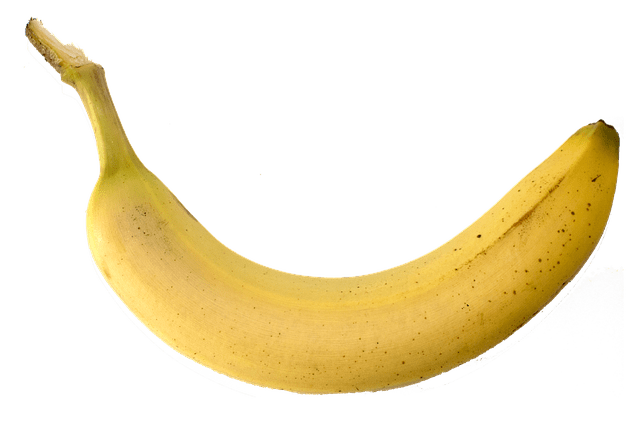
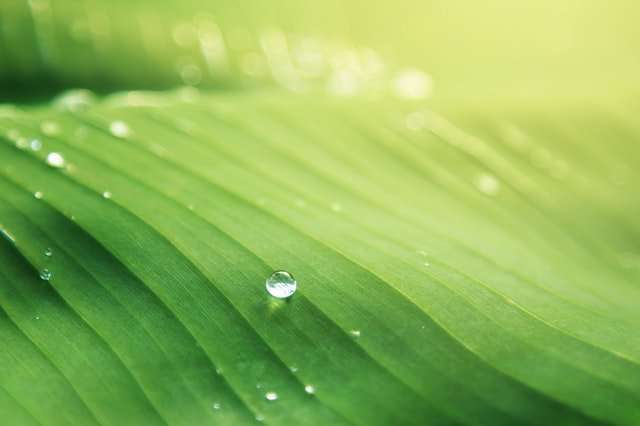
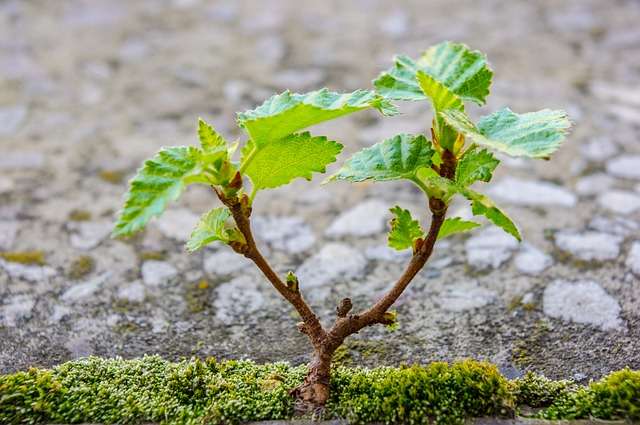

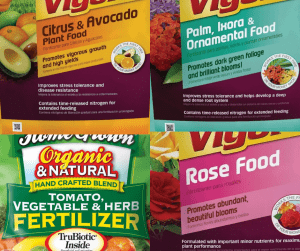



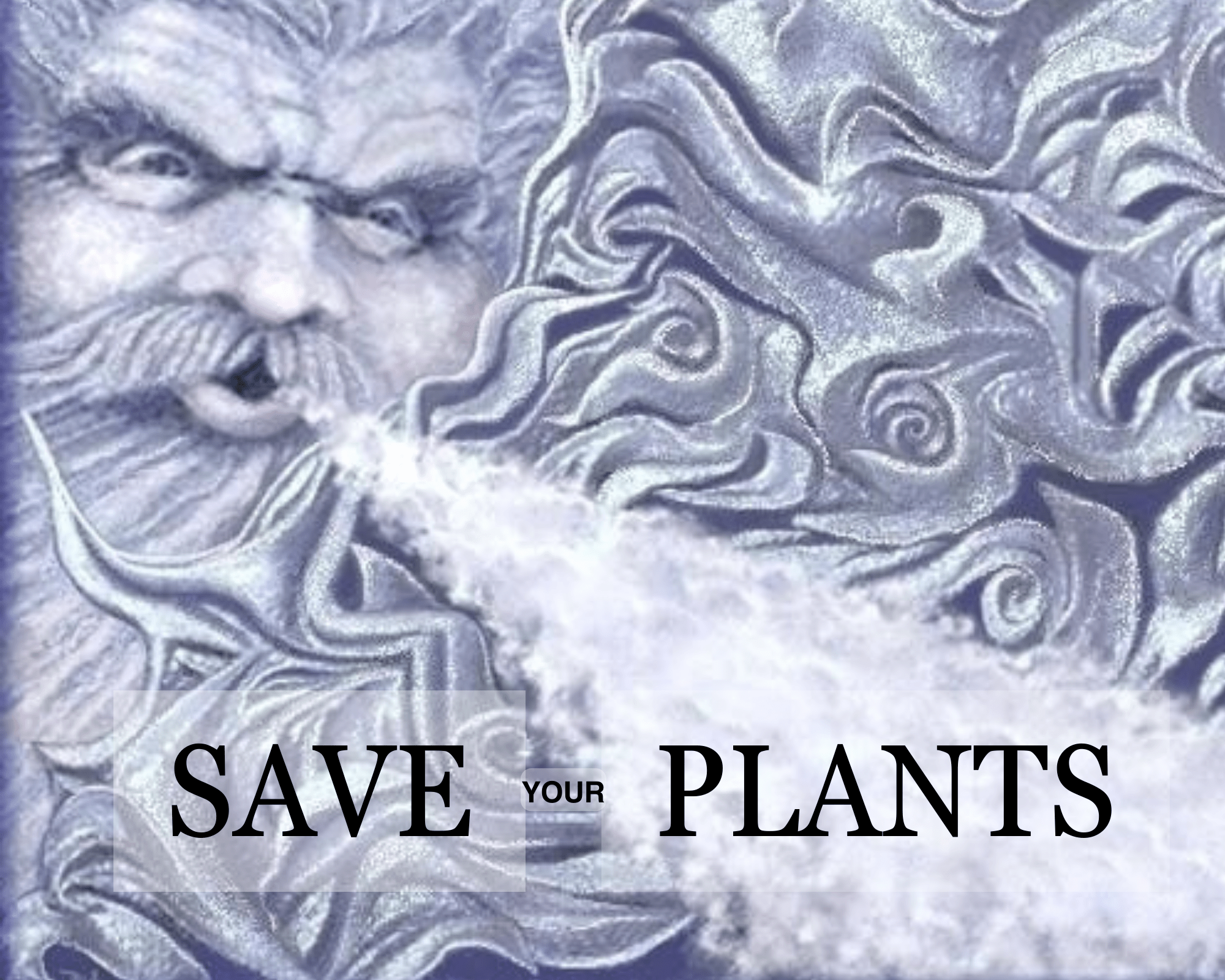
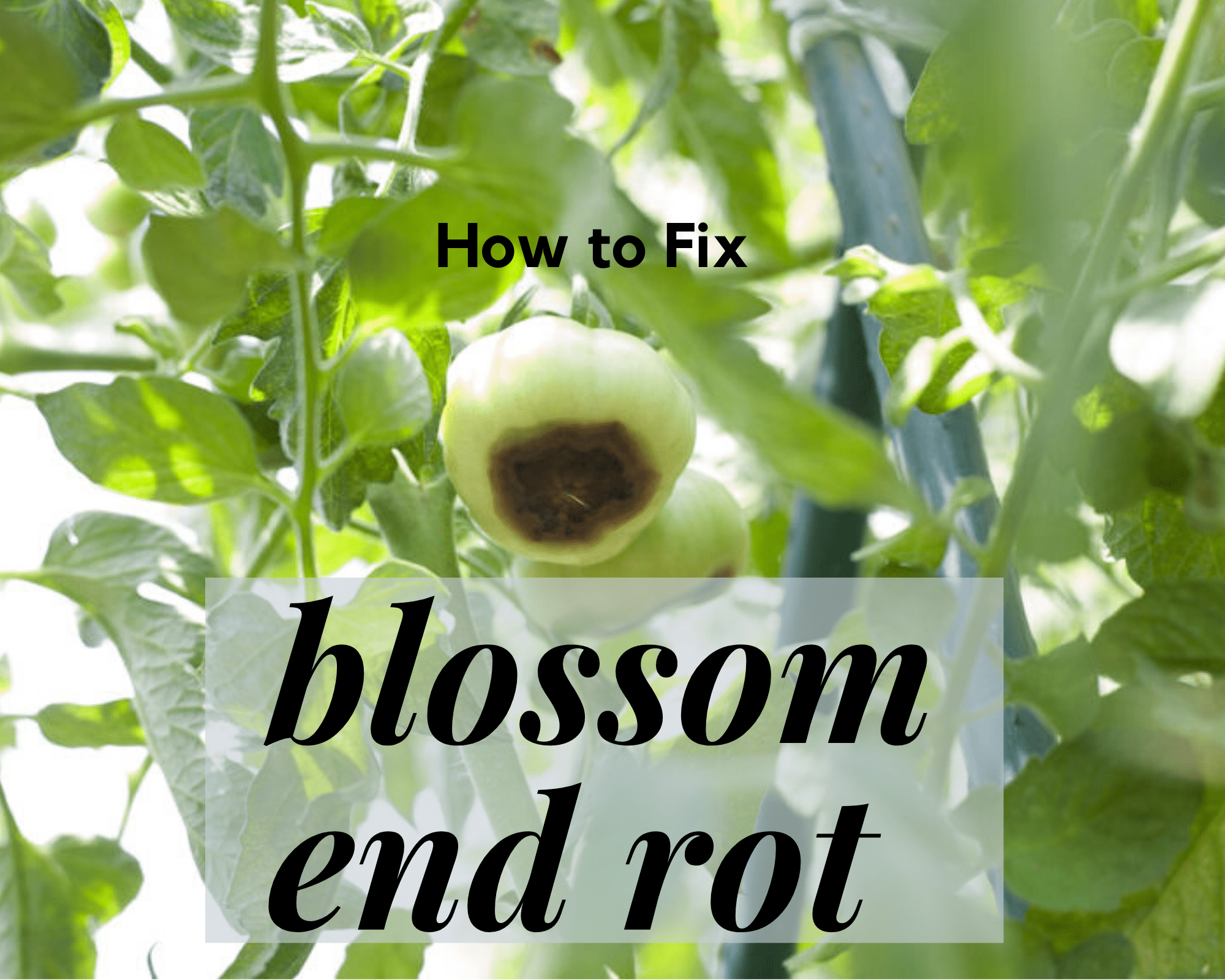
This was great! As a a newbie plant enthusiast (who is too in love with my plants to abandon them if post-Covid ever happens), I really appreciate this info. I’ve noticed that the FB forums are filled with neophytes giving advice (and to be fair, also with some long time enthusiasts that have some pretty whack advice that I can never find evidence for).
Thanks Elizabeth. I’ve noticed that on Facebook myself. Best of luck to your garden endeavours!
Hey Diane,
The best practices for tree planting recommend scraping the side walls (not the bottom) of the planting hole to help roots penetrate. Ensure that the root flare is exposed, create a watering well around the tree and add lots of mulch to the soil. One of your fellow Arizonans Shamus O’Leary of Greenlife has a brilliant YouTube video about this very subject. Water as appropriate for the tree (this is super important) and don’t stake it. The wind helps a tree to strengthen its trunk.